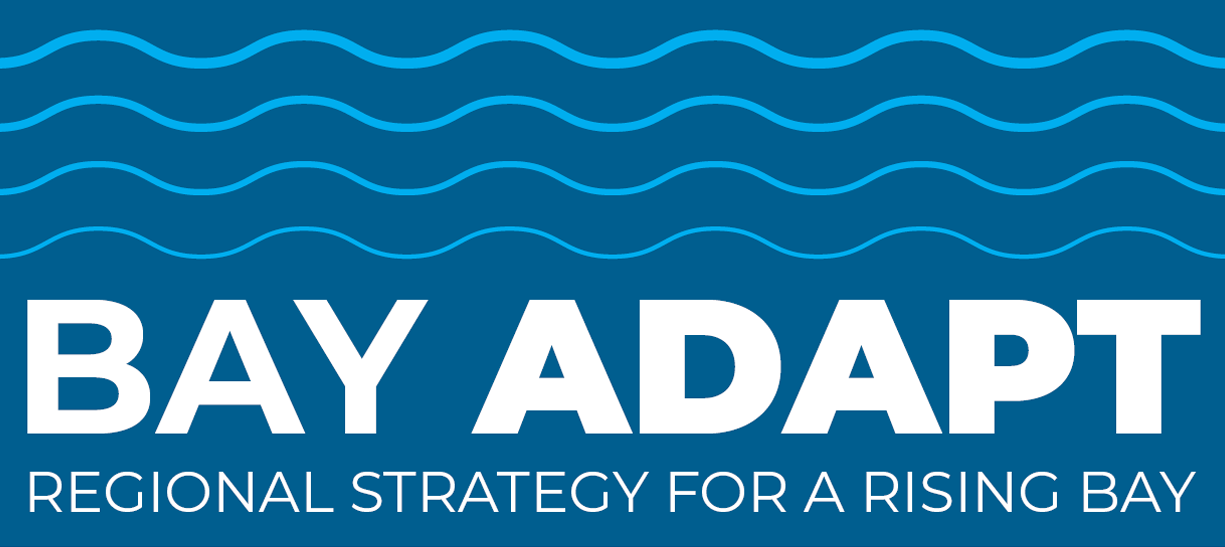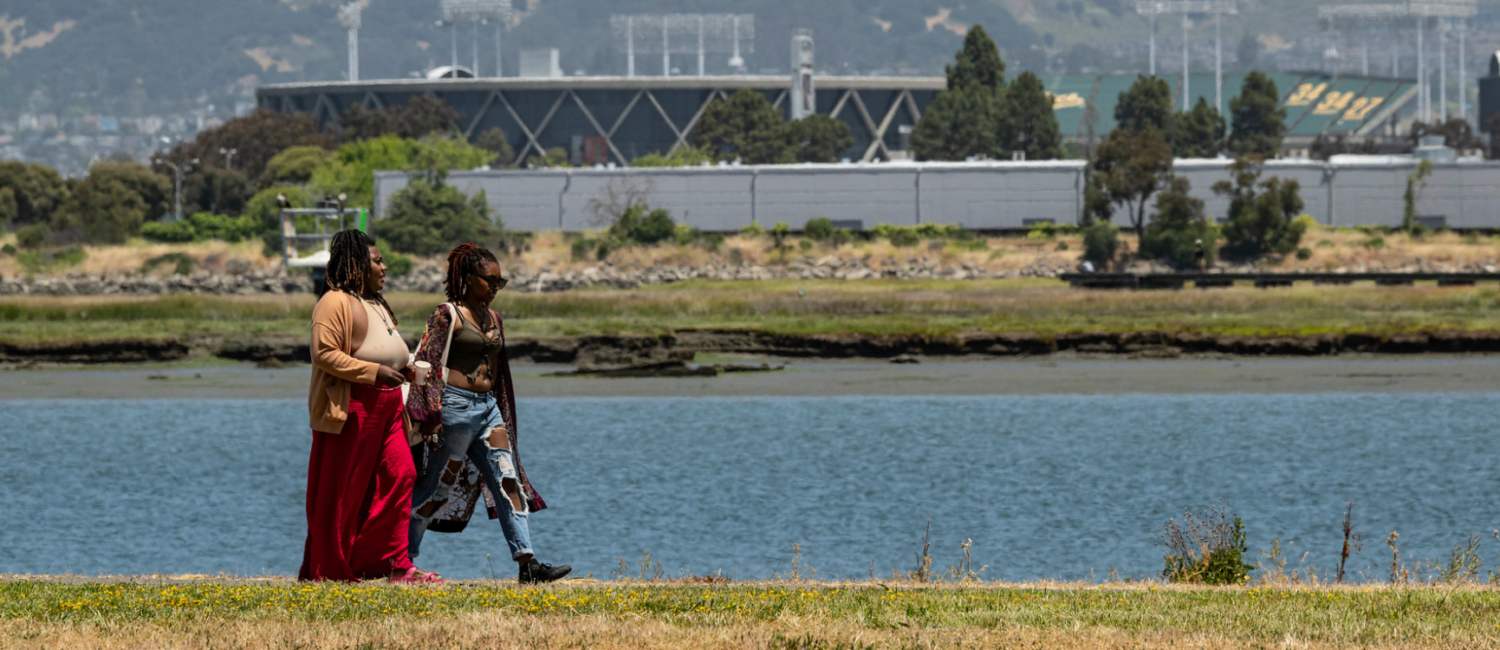
BCDC is thrilled to award Keta Price with the Bay Adapt Award. Also known as the “Hood Planner”, Keta is a passionate advocate at the intersection of racial justice, environmental resilience, and mobility equity. She is the Principal Planner at the Hood Planning Group. The Bay Adapt Awards recognize individuals who are leading the way with exemplary contributions and innovations addressing the critical challenges of sea level rise.
Growing up in East Oakland in a tight-knit family, Keta’s connection to green and open spaces as part of her family tradition left an indelible mark. From an early age, she was an engaged member of her community, but it was during her college years that she actively took on organizing and grew her leadership skills.
I learned about a profession where people literally plan and design neighborhoods, and I didn’t see enough of us being a part of it. So, it became my mission to learn more about it and inform people about that process."
Keta Price
From 2017 to 2022, Keta co-led grassroots efforts that shaped landmark plans like the East Oakland Neighborhoods Initiative (EONI) Community Plan, Power the People: MLK Jr. Shoreline Access Study, the East Oakland Mobility Action Plan, and the Oakland Shoreline Leadership Academy—projects that center Black and Brown voices in the fight for safe, healthy, connected neighborhoods and protected shores. In 2022, she launched the Hood Planning Group to inspire and empower Bay Area ‘hoods to reclaim, reimagine, and rebuild their built environment through community-rooted environmental justice and mobility projects, ‘hood activations, and transformative collaborations that shape policy and systems.
Through Hood Planning Group, Keta leads and contributes to efforts from the ground up—from neighborhood-scale projects such as the Green Stormwater Infrastructure by and for Communities (GSI-C) and Sacred Spaces, to regional collaborations like the Oakland Alameda Adaptation Committee (OAAC).
The Bay Adapt Award winners are being recognized at the Rising Together: The Bay Adapt Summit on September 15, 2025. Get the last tickets for the celebration.
We caught up with Ms. Price for a chat* on adaptation and resilience in the Bay Area. Read the highlights below:
My vision for a resilient shoreline is a holistic one: a protected shoreline, where people and habitat can safely enjoy it in a way that speaks to them. Having a variety of shoreline sanctuary areas, different recreations for different folks, and accessibility to all.
Be part of protecting it. Having that stewardship element is important in terms of resilience for us, to me, and to a lot of the projects I’m a part of. It’s making sure that community opportunities are installed and stored in some of these spaces as a part of reconnecting people to it.
The biggest challenge right now is the political climate, how it’s changed, and how that [lack of] investment might impact a lot of the work that we do, since it’s not valued as much, but I haven’t felt it directly.
Additionally, the challenge in terms of doing climate work specifically for me, being in the neighborhood that I’m in, is getting people to see it as an urgency when there are so many other competing priorities going on. Until it happens, then they care about it. For example, some funders don’t recognize the importance of food and childcare. Things like that are getting better, but they’re still limited to grab-and-go food, for example, instead of having sit-down food. Culturally, we break bread because that’s what brings people together.
The biggest challenge is the urgency of people’s day-to-day priorities. But that’s also the challenge that I welcome. It’s my niche to try to figure out how to reach people and meet them where they’re at and make them realize how important it is now.
One way is social media, trying to make relatable videos to reach the non-usual suspects who don’t usually come to these workshops by speaking to them through the videos and in a language that they understand.
I learn the most cutting-edge technology, whether it’s Augmented Reality (AR) or other things. On the Green Stormwater Infrastructure, we partner with Damian McDuffie and the Black Terminus AR project so that we can use this technology to create a neighborhood tour of the work that we did, and people can use this AR app to see it in a cooler way, instead of just seeing a document.
Being creative in different ways, leveraging technology as much as possible. And, again, meeting people where they’re at, no matter if it’s black folks, younger folks, just trying to show up appropriately and respect everybody. I’m from the hood, I don’t take it for granted, then I can just be the same way with everybody.
Also, I activate the hood as much as possible. I’m the co-founder of the East Oakland Futures Fest. This annual festival on 90th Ave is all about coming together to plan for the future in East Oakland, celebrating community planning. It’s organized in different zones, and we have different city planning folks with whom people can engage and give feedback on what’s going on in their neighborhood, but also come out and have family-friendly fun on this infamous corridor that people are not used to being able to use, and show them that it’s possible.
It’s super important to bring together different agencies and representatives for adaptation work. But the waterways don’t have boundaries, and that’s exactly the reason why I got involved with the Oakland Alameda Adaptation, leading the steering Committee and as part of the community partner team. It’s a good learning space for me, and it should be for others. I think it’s super important for us to address things together.
Also, to get more community leadership at the forefront of this. We’ve been exploring things like a joint powers authority (JPAs). Right now, OAAC is informal, and so we’re trying to formalize it. We talked about creating a body where the different agencies have some type of vote as we’re going out for these different fundings.
Traditionally, a community is a non-voting member, but we want to have more leverage and representation than that. It is challenging for the community sometimes to come and be a part of these places and fully participate, but I’m trying to help guide from the community code of care, manage expectations, and redirect energy towards the bigger picture.
I’m looking forward to more personal development and for the Hood Planning Group to contract more people to support this work. That’s one of my biggest focuses right now.
I want to continue to support Sacred Spaces and new developments at the MLK Shoreline. With a holistic view of restoration, community access, and recreation, because the space is important to me personally. I always went there as a kid, so I wanted to make it more inviting and make sure that the projects happening there are in synergy and properly engaged.
My family’s support. Working with the youth makes me feel like there is a cool future. And, working with mentors who have been around for some time, like Robin Freeman. I’m happy to see that we’re not completely repeating the same stuff in some areas.
And the people that I engage with—they care—it’s the pride of the people that gives me hope. I feel like it gets tough sometimes when you’re not sure if a project is working, but when you find just a few that care, it’s worth it.
*The interview was edited for length and clarity.


[…] 2025 awardees are Luiz Barata from the Port of San Francisco’s Waterfront Resilience Program, Marquita “Keta” Price from Hood Planning Group, and Jeremy Lowe from the San Francisco Estuary Institute. […]